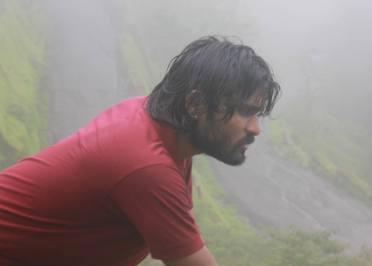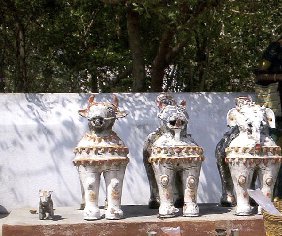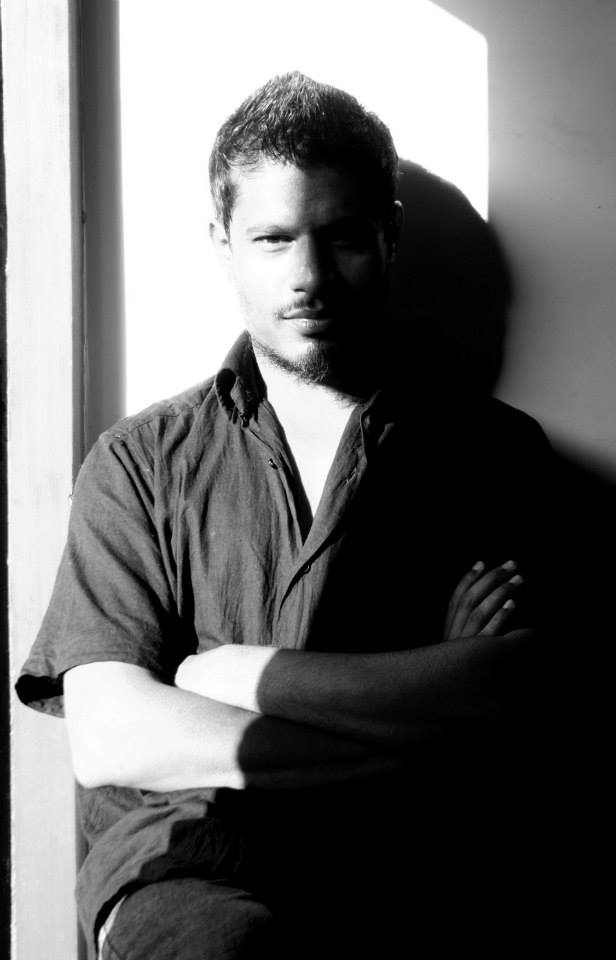Pruthviraj Rama Gorakh
 On the 13th of July, an incident of brutal rape and murder took place in Kopardi village of Ahmadnagar district in Maharashtra, and shook up the state socio-politically. A 15-year-old girl had been raped and murdered by three men from the same locality. The act was a height of perversion in terms of brutality. According to the police investigation report, there were deep bite marks all over the body, her hairs pulled out, lips mutilated, teeth smashed, limbs broken and shoulder dislocated. Anyone with a sound mind will be disturbed by this heinous crime. Repercussions of this incident are still being seen in society and will likely last well into the future.
On the 13th of July, an incident of brutal rape and murder took place in Kopardi village of Ahmadnagar district in Maharashtra, and shook up the state socio-politically. A 15-year-old girl had been raped and murdered by three men from the same locality. The act was a height of perversion in terms of brutality. According to the police investigation report, there were deep bite marks all over the body, her hairs pulled out, lips mutilated, teeth smashed, limbs broken and shoulder dislocated. Anyone with a sound mind will be disturbed by this heinous crime. Repercussions of this incident are still being seen in society and will likely last well into the future.
After the death of the victim, all political party leaders including the Chief Minister arrived to console the victim’s family. Dalit leaders were also willing to visit the victim’s family, but people in the village did not allow them. The reason behind this was that the culprits were Dalits and the victim was a Maratha girl. The Police and state machinery barred Dalit leaders from visiting, citing the reason as: ‘maintaining law and order situation’.
After their visits, the remaining political leaders issued various statements. For example, Raj Thackeray, the leader of MNS said that there was a need to bring a law like “Sharia” to stop crimes like rape. In another statement, he said that there was a need to scrap the Scheduled Castes and Tribes (Prevention of Atrocities) Act, 1989. Veteran Maratha leader Sharad Pawar said the same thing. Shiv Sena chief Udhav Thackeray called for an emergency session in the State Assembly. Jiva Pandu Gavit, the only MLA from CPI-M, declared that such criminals should be lashed and hung in public. Chief Minister D. Fadanvis declared that people shall be issued with weapon licenses for self-protection, and veteran political figure Anna Hazare demanded death penalty for the rapists to set an example in society.
These statements by leaders across party lines have been debated on the digital as well as print media for months. If we look at these statements, we find that there is no connection between the rape case and the SC ST (Prevention of Atrocities) Act. Some leaders suddenly began talking about the misuse of this act by claiming that more than 95 percent of the cases were fake and that the Act was hugely misused against Marathas. Basically, there was no connection between this and the crime that happened, but their political clout was very strong and news channels, especially the prime-time programmes engaged in the discussion by calling Dalit leaders on one side and Maratha leaders on the other to debate the issue. A common observation I made after watching prime-times of all Marathi TV news channels, was how the Dalit leaders were being called on the shows to express their views, as if they were responsible for the act of rapists and murderers.
This carried on for over a month and since the audience of these channels was huge, they had galvanized the minds of common masses. This led to the creation of rifts between Dalits and Marathas in the state. This rift happened because of the irresponsible and baseless statements made by dominant political leaders and news channels that constructed the debate between Dalit leaders and Maratha leaders on prime-time. This impacted people’s minds and the same debate percolated into social media. This is how after two months, the Marathas began gathering in lakhs, for the ‘Maratha Kranti Muk Morcha’ (Maratha’s silent protest). News channels played an important role in constructing the Maratha Kranti Muk Morcha. The binary of Dalit and Maratha on prime-time fed into the anger of audiences who became part of the morcha.
This binary has been created on purpose by politicians and political interests to sustain their vote share, and intentionally created by news channels to sustain their TRP, since the Marathas make up 32 percent of the population, which means they ensure a good viewership.
Now we shall try to examine the logic of Maratha Kranti Muk Morcha. This morcha is happening in the district centers across the state. As of now, this march has taken place in Beed, Osmanabad, Aurangabad, Hingoli, Jalna, Latur, Solapur, Pune, etc., and will happen in rest of the districts as well as in Mumbai, the capital of the state. The morchas began with the demand that the culprits should get death penalty and justice should be done to the rape victim. The silent protests started after 20th of September, two months after the rape incident. Within a month, the culprits were arrested by the police. It was Dalit activists who helped police arrest the culprits. There were demands for a fast track court to deliver speedy justice and people were also demanding death penalty for the accused. All Dalit leaders asked for hard punishment for the culprits and the mother of one of the culprits detached herself from him and wished death penalty even though one of them was her own son. In fact, though Dalit leaders could not reach Kopardi to meet and console the family, on July 19, under the leadership of Prakash Ambedkar more than 25000 people carrying out a huge protest against the alleged ‘Ambedkar Bhavan demolition’ in Mumbai expressed their condolence to the victim by holding a two-minute-silence before declaring the agenda of the protest.
If the Dalit community itself is not in support of the culprits, everybody is in consensus that penalty should be hard and the whole state machinery is in support of the victim, then what is the logic behind gathering and protesting in huge numbers?
To understand this, we have to see the agenda put forth by the Maratha girls in the protests. Two main agendas have been put forth: 1) Scrapping of the SC ST (Prevention of Atrocities) Act and 2) Reservations for Maratha community within OBC.
If you listen to the speeches of school-going girls in the protests, you will notice a strong resentment against the SC ST Atrocity Act. It is interesting that very young girls are giving speeches and addressing lakhs of people. These girls are advocating the scrapping of the Act because Dalits were apparently putting false cases against Maratha men, and thousands of Maratha families have been ruined due to this. Their claim of bogus cases against Marathas is false since no Dalit in the village has the power to go against the Marathas. Dalits in the village depend on Marathas for their sustenance, so saying that they are putting false cases without reason is wrong and misleading. The fact is that our judiciary is very lethargic in processing and unwilling to sort the cases out. Most often in judicial procedures, caste interests of the accused combine with the caste interests of the people in charge of giving justice and create a soft corner for the accused because of which the person gets acquitted or gets a light penalty. This is the reason why the conviction rate for such cases remains around 5 percent.
Marathas are a dominant caste and consider themselves as Kshatriya-born warriors. In the caste hierarchy of Maharashtra, they are currently enjoying a social status next only to Brahmins. Maratha caste members have been committing atrocities over Dalits in the villages to sustain their caste pride throughout the centuries, but under the above mentioned act, exercising caste power over Dalits is considered a culpable and non-bailable offence. This has hampered the caste pride of Marathas in the village and is the main reason why they are talking about scrapping the Act. But I have an innocent question. If this is the bone of contention, then why are no young Maratha men talking? Why are school-going Maratha girls talking about it? If most of the atrocity cases are on Maratha men, then why are they not talking against it? Why are small school-going girls talking against it instead?
The demand for reservation has the same logic. In the same protest, they raised the question of reservation. The argument for demanding OBC reservation for Marathas was that Marathas were deprived economically, and have no space in education or administration. Small girls were expressing jealousy towards those who get the benefit of reservation. However, political power in the state, right from its inception, has been exercised by the Maratha caste. Economically, the cooperative sector, sugar factories, dairy, land, educational institutions and other material resources have been owned and controlled by this caste. In all spheres – social, economic, and political –the Maratha caste is dominant and has the upper hand. Then how is their demand for reservation justified?
Again, there is something hidden under the carpet. In the aftermath of Mandal commission, the 73rd and 74th amendment bills were passed and implemented in 1994; the constitution now ensured reservation for women, SCs, STs and OBCs in Panchayat Raj institutions. Because of this, SC-ST-OBC representation came into being in the Panchayats and monopoly and authority of Marathas received a big blow. To cope with this, they invented a new caste named ‘Maratha-Kunbi’ to get into OBC quota. The State and dominant castes invented the new caste for the first time in history, to sustain the political power of the same caste. Otherwise, there is no evidence of a ‘Maratha-Kunbi’ caste in any anthropological study or survey (Deshpande, April 2004).
So this demand for reservation by Marathas is not new. I am not denying their deprivation educationally as well as economically, but reservation is not the remedy for it. If you have all kinds of resources and your caste is assigned a superior social status along with it, then how can reservation be the remedy?
There is a demand for reservation because of the unrest and jealousy within educated Maratha youth against the people who are in reserved quota. When all private educational institutions in the state are run by Marathas, then why are poor Marathas failing to get admission in them? This question has to be put forth by educated Maratha youth to the Marathas who run the educational institutions. But instead, they are questioning the reservations of SCs, STs, and OBCs. Again, I have an innocent question: if this is such a sensitive issue, then why are no well-educated persons addressing these marches? Why are school-going girls addressing this much important issue before thousands of people?
The journey of Maratha Kranti Muk Morcha had started with seeking justice for the victim of the Kopardi gang rape and murder case but was turned into a movement for scrapping the Prevention of SC ST Atrocity Act and a demand for Maratha reservations. Maratha girls have given enormous response by participating in the morchas. There were posters and banners in the rally that read, “Oh Maratha, at least now be alert and save the honour of your sisters”, “Don’t dare to look at a daughter of Jijau, otherwise Maratha unity will teach a lesson”. Basically, this protest rally itself was an act of caste. Caste means endogamy within the group. In caste society, endogamy operates in a hierarchal order by the means of controlling women. No wonder then, that rape is a normal phenomenon. However, this normality depends on your social location assigned by Dharmashashtras. So the intensity of the response varies according to the social location of the perpetrator and victim. If men from a high location commit rape on women from low location, it is accepted and normalized with no penalty for it. But if men from low location commit rape on women from high location, it is considered as an attack on humanity, and the penalty for the perpetrator would be to cut his organs, ultimately leading to death. This unequal law has been assigned by the Hindu religious texts to degrade the status of Shudras. There is no equal law for all humankind and no human is equal before the law. This is how the four-Varna system has been built based on hierarchy and inequality (B.R. Ambedkar, 1946).
This logic of Hindu religious texts continues to work in the mentality of today’s dominant caste people. When lower caste women are raped by upper caste men, it is considered as normal but when lower caste men rape an upper caste girl, it becomes a crime against humanity, and leaders like Raj Thackeray and others speak of cutting the limbs and public hanging of the perpetrator.
Dalit women get raped in the country every day. Why does no one from the Maratha caste bother about it? Ahmadnagar district has one of the highest rates of atrocities on Dalits, so why has the heart of Anna Hazare not wept for it? Anna Hazare opened his mouth only when a Maratha girl got raped, demanding death penalty for the culprits. The same logic applies to Maratha Kranti Muk Morcha. The Indian Constitution according to Article 14 declares equality before law and equal law for everybody, but the notions of the people work according to the Hindu Dharmshashtras where law is not equal for everybody and everybody is not equal before law. This is why movies like Sairat and Fandry cause discomfort, since they attack the notions of Marathas built by Hindu religious texts.
Some of my friends were praising the girls giving speeches in the morchas but I was suspicious about it. I had another innocent question: why and how were small girls leading the protests of thousands? Why are girls talking of scrapping The Prevention of SC ST Atrocity Act and why are only they giving fiery speeches? What can be the answer to this innocent question? Should we think that Maratha men have become gender-sensitive or should we think that it is very easy for Maratha men to use women’s shoulders to shoot their target so that retaliation from the other can be avoided? The target here is obviously the scrapping of SC ST Prevention of Atrocities Act and reservation.
An important question now remains unanswered. Who has set this gun? Is the political ruling class with the help of news channels trying to create a rift between Dalits and Marathas so that Bahujan politics is prevented from emerging in the state and their own power is consolidated? Or does the Maratha community itself not understand that the cause for their economic degradation is not reservation or any act but 20 years of LPG policy in the state? The media knows the answer and so do the Maratha brothers and sisters.
~
References
1) B.R.Ambedkar. (1946). Who were the Shudras.
2) Deshpande, R. (April 2004). Kunbi Maratha as OBC. EPW .
3) Omvedt G. (2004) Maharashtra; Politics of Culture. EPW
4) Palshikar Suhas (1994) Sealing the Fate of Non-Maratha Castes EPW
5) Mungekar B. (22 Sep 2016) March of the Maratha. Indian express
6) Prime time (Maharashtra1) Ajachasawal
https://www.youtube.com/watch?v=0–CEmC9gyo
7) Prime time (IBN LOKMAT) Bedhadak
https://www.youtube.com/watch?v=-vqfygdR0JE
8) Prime time (Jay maharashtra) lakshyavedi
https://www.youtube.com/watch?v=54nfrO_eHlo
~~~
Pruthviraj Rama Gorakh is pursuing his M.A. in Media and Culture Studies at TISS, Mumbai.










